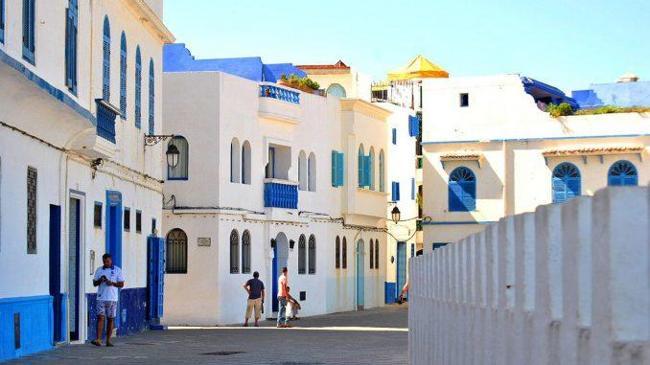Assilah… a prestigious tourist center

Asilah or Azila, as the people of the North call it, is one of the Moroccan cities that are small in size, but large in history and heritage. It is one of the most important cultural tourism hubs in the Arab world. Each year, its festival brings together intellectuals by the thousands, from all over the world.
This city, which has around 32,000 inhabitants (2013 statistics), was built according to Andalusian architecture. Amazighs, Phoenicians, Carthaginians and Romans lived there thousands of years ago, before being destroyed during the conquest of the Vandals, according to many historical references, and before the Almoravids rebuilt it. new.
The city was colonized for decades by the Portuguese. And it was Sultan Ahmed Al-Mansour Addahbi who liberated it in 1589. At the beginning of the 20th century, it served as a bastion for the leader of the resistance Ahmed Rissouni who extended his power to many lands in the north before d 'be expelled by the Spanish who have tightened their grip on the city until Morocco achieves its independence.
Assilah is known for its beautiful sandy beaches such as “Laaouina”, “Paradise”, “Kahf Lahmam” and “Sidi Ahmed Zawaq”. It is also distinguished by its mild Mediterranean climate and its marvelous tourist areas, at the forefront of which is the old town with its ancient narrow blue and white alleys, its historic ramparts and its ancient gates such as the "Kasbah gate", the "Porte de la Mer" and "the Porte du Marché".
The city is home to many historical monuments such as "Al Masjid Al Jamii", a mosque built in the 3rd century, the "moon tower", built by the Portuguese at the end of the 15th century, the "Tikane" square, the tower "Krikia" and the Rissouni palace overlooking the ocean and built according to Islamic architecture, and the palace "Al Khadir Ghailan", in reference to the prince of Assilah, who built it in the 17th century.
The Jews lived in Assilah, alongside the Muslims. Their number represented 5% of the total population, according to Auguste Mouliéras, in his book "The unknown Morocco: geographic and sociological study. Exploring the Rif ”.
The Jews were gathered in the Lalla Rahma district in front of Bab al-Homar. This district did not resemble the Mellahs which existed in many Moroccan cities. It is the area that still houses a large Jewish cemetery today, which has become a pilgrimage destination for many Jews who come from all over the world to meditate on the graves of their ancestors.
It should be noted that Jews began to flock to Assilah since the middle of the 15th century in order to escape the Inquisition.



